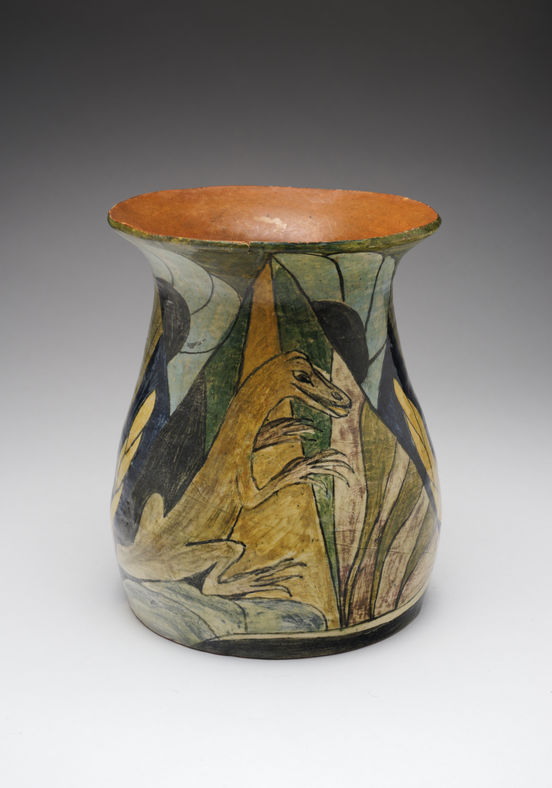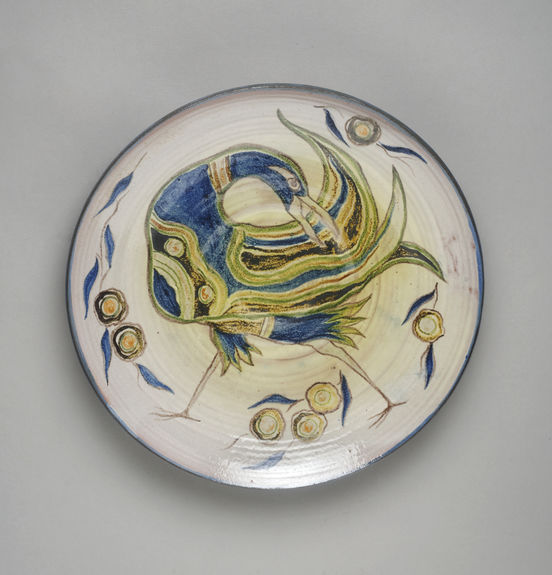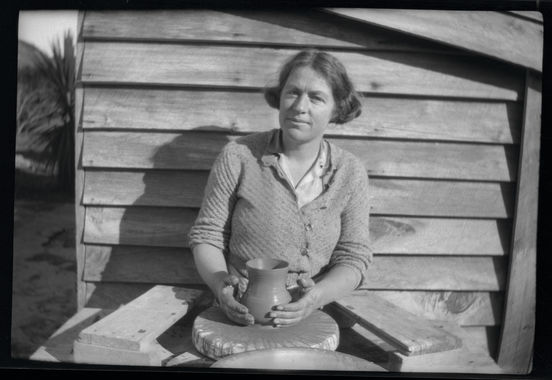Marlborough-born Elizabeth Lissaman made her first pot in 1920 and her last in 1990 while a resident at Crathie rest home in Tauranga. She was New Zealand’s pioneer studio potter, designing, throwing, decorating, firing and selling her earthenware pottery continuously for almost 70 years.
Lissaman received no formal tertiary education and carried out her work alone while living in rural parts of the country. Through experimentation and determination, she honed the creative, technical and marketing skills needed to successfully craft and sell pottery in times of economic restraint during the Depression and the Second World War.
Lissaman’s work is not widely known yet her impact alongside other female potters of her generation including Briar Gardner and Olive Jones demonstrates her commitment to forging a serious and entirely unique ceramic practice. As an independent thinker, Lissaman defended her right to decorate her work as she wished. She rejected calls for New Zealand potters to develop a distinctively typical style. I hope they don’t,” she wrote in 1969, “we are a small nation of individualists who strive, on our own, to develop arts which satisfy something within ourselves.”
She was inspired by developments in international decorative arts. Between the 1920s and the late 1940s, she linked into the art deco movement sweeping the Western world, creating brightly coloured domestic ware in modern shapes. Decorated with Middle Eastern motifs and native and exotic Australasian flora and fauna, her wide range of bowls, jugs, vases and plates found ready buyers. From the 1950s when pottery in New Zealand flourished as a protected industry and many potters began to make stoneware, she produced monochromatic and striped mid-century modern earthenware. For her last 20 years, from the 1970s, she returned to making colourful figurative pottery especially plaques, or wall plates, decorated with whimsical birds.
Elizabeth Lissaman: The Art of Pottery draws extensively from private collections throughout New Zealand. The exhibition is curated by Jane Vial with exhibition design by Micheal McCabe. It coincides with the launch of a major Rim Books publication on Elizabeth Lissaman by Jane Vial with an essay by Steve Austin and photographs by Haru Sameshima.
Elizabeth Lissaman : New Zealand's Pioneer Studio Potter by Jane Vial and Steve Austin is available for purchase for $60 (including GST) from Objectspace.
---
Elizabeth Lissaman was born in Blenheim in 1901. She was educated at Fitzherbert Terrace School, later Marsden School, in Wellington where she was first introduced to pottery making by her art teacher DK Richmond. In 1923 she spent 10 months in Sydney furthering her own study of pottery.
She spent the next fifteen years back in rural Marlborough and during the Depression years sold many art deco pieces to department stores to supplement earnings from the farm she ran with her husband, Henry Hall. In 1937 with three young children, they moved to Horowhenua where Elizabeth also began tutoring pottery. After the war, they moved to a farm at Tahuna near Morrinsville in Waikato.
Lissaman is well known for her textbook Pottery for Pleasure in Australia and New Zealand first published in 1969. She was made OBE in 1982 for services to pottery. She died in Cambridge in 1991.

Vase Lizards, 1926. Gabby Cox Collection, Auckland. Image: Haru Sameshima.

Plaque with bird design, 1980. The Dowse Art Musuem. Image: Haru Sameshima.

Elizabeth Lissaman